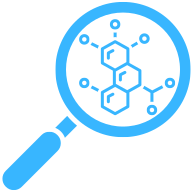Biometrics for Humanitarian Purposes: 3 Impactful Applications
Unlocking the potential of biometrics can revolutionize humanitarian aid, offering secure and efficient solutions where they are most needed. This article delves into the transformative applications of biometric technology, enriched by the perspectives of leading experts in the field. Discover how cutting-edge innovations are shaping the future of assistance in crisis situations.
- Biometrics Aid Refugees with Secure Identification
- Biometrics Enhance Refugee Assistance and Public Health
- Biometrics Revolutionize Aid Delivery in Crises
Biometrics Aid Refugees with Secure Identification
Biometrics is now at the forefront of many humanitarian efforts, particularly in aid to displaced people and refugees. A simple example is how organizations use fingerprint and iris scans to let the refugees have access to aid and necessary services. Where identification documents might have been lost to conflict or a natural disaster, these systems now offer a highly secure and reliable means by which someone can re-establish their identity, independent of traditional retrievable documentation.
A good case is in the use of iris-scanning technology in refugee camps under the UN and other organizations in Jordan, for example, where Syrian refugees can access food, medical attention, and financial help by having their irises scanned at distribution points. This system is fraud-proof, ensures that the right people are entitled to aid, and speeds the process of assistance. In this way, it provides a form of identity to the displaced persons when they can otherwise not avail themselves of any official document, although they still have to go through normal hurdles.
The impact here is so great because it restores dignity and security to people in crisis. An ID is important because it would hence almost prohibit even the most basic needs, such as food, healthcare, and financial aid, without it. Biometrics break down barriers, reduce bureaucracy, and help ensure fair and efficient delivery of assistance. This could be the poster of technology, when applied responsibly, returning life to the very vulnerable communities across the globe.

Biometrics Enhance Refugee Assistance and Public Health
Biometrics is increasingly used for humanitarian efforts, particularly in refugee assistance, disaster response, and public health. It identifies individuals through unique physical traits like fingerprints and facial recognition, which is vital when traditional documents are lacking. The UNHCR exemplifies this by implementing biometric registration in refugee camps, capturing fingerprints and facial images to establish secure digital identities for displaced individuals.

Biometrics Revolutionize Aid Delivery in Crises
Biometrics technology is revolutionizing the way aid is delivered in humanitarian crises through the innovative use of fingerprint and iris recognition systems. For instance, the United Nations High Commissioner for Refugees (UNHCR) uses biometrics to efficiently manage refugee identities. This technology helps in accurately identifying individuals, which is crucial for delivering the right assistance to the right people, reducing fraud, and ensuring that resources are not misappropriated by those who are not genuine victims of a crisis.
The application of biometrics in such settings not only streamlines the process of aid distribution but also upholds the dignity and rights of displaced persons by safeguarding their personal data and preventing identity theft. In refugee camps around the world, where documentation is often lost or destroyed, biometric data can serve as a reliable form of identification that stays with the individual as they move and potentially cross borders. This method maintains an organized system that is both humane and efficient, making it a powerful tool in the global response to humanitarian emergencies.


